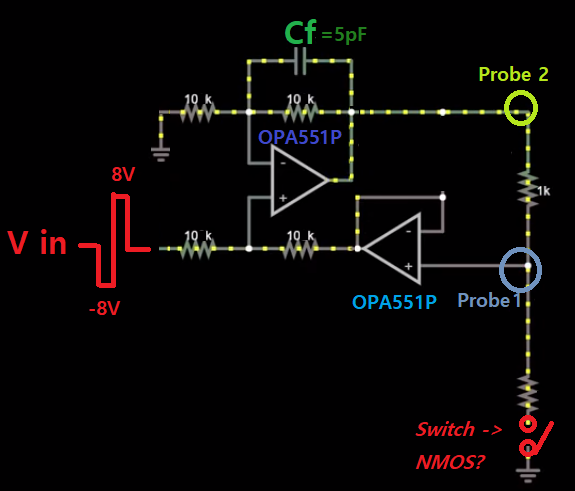Other Parts Discussed in Thread: OPA551
Hi, guys.
I'm using the application note
http://www.ti.com/lit/an/snoa474a/snoa474a.pdf
to create the Howland Current Pump with OPA551 with an MSP-EXP432P401R launchpad.
A periodic signal (100Hz ~ 4kHz, max amp = 20V) is fed to the OPA551 input.
For my personal reason, I wish to disconnect the GND which is connected to the load.
Like most NMOS/PMOS application, I can use 3.3V GPIOs to open or close the circuit.
However, since the OPA551 is giving high voltage output and current(also positive + and negative -), I wasn't sure whether I can apply NMOS/PMOS for my case.
Can I use NMOS or PMOS to disconnect GND when I want? If so, what part from TI can you recommend?
The power consumption, package size, or price doesn't matter. I wish a product that can handle this high voltage and current.
Also, I do prefer a package that can be populated to a breadboard right away.
Or if there is a better solution instead of using NMOS/PMOS, considering that I'm using a MSP-EXP432P401R launchpad, I wish to hear other methods, too




